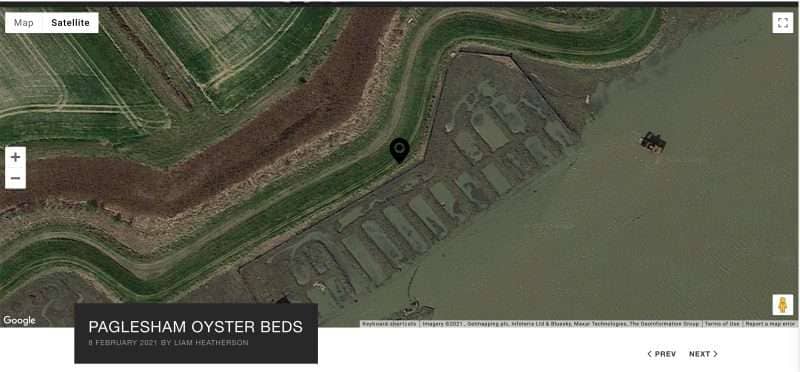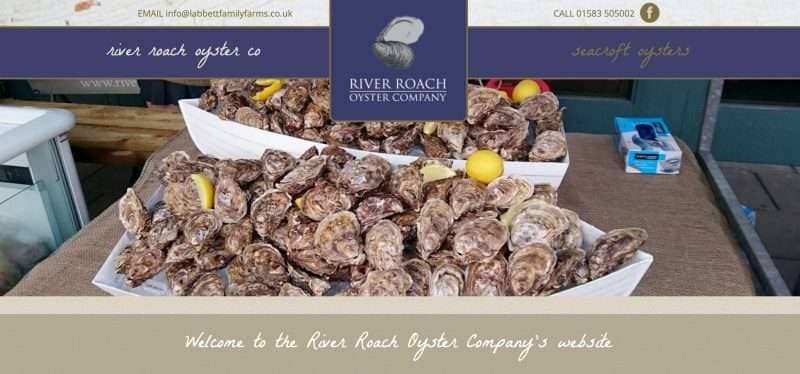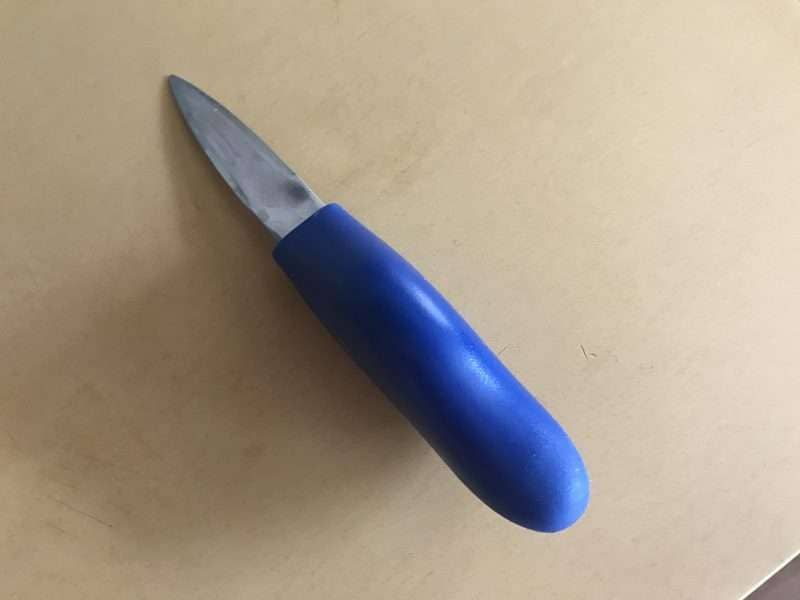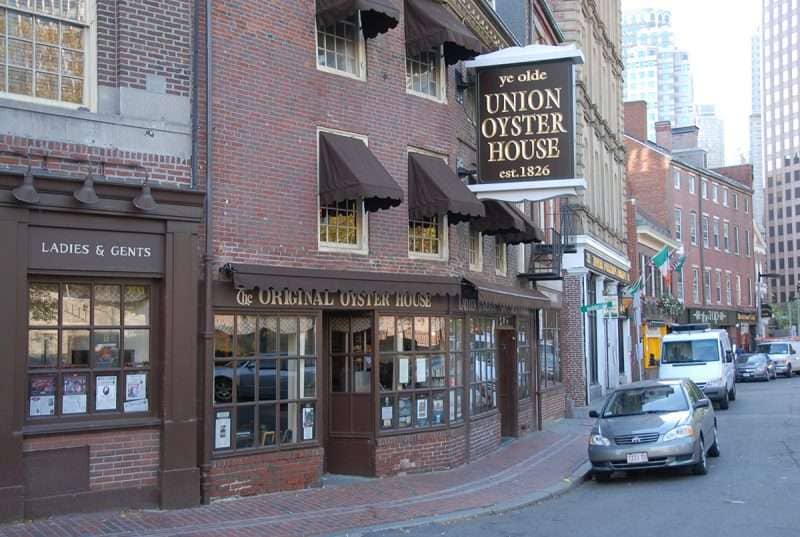…and, whilst reluctantly, admitting that
I have [on occasion] squandered my resistance
For a pocketful of mumbles [or, at least oysters]
and noting that I’ve no fucking idea what ‘mumbles’ are, which memory reminded me, for no reason I can work out, of the line “I’m always in the wrong place, at the wrong time”, from The Only Ones’ “Flaming Torch”
For this piece, be aware that I continue my love for, and fascination with, the little molluscs known as oysters which long predate us non-shelled humans. Fossils of tiny, barely visible oysters, have been dated to the Cambrian period 520 million years ago. I couldn’t put it better than this
“Obviously, if you don’t love life, you can’t enjoy an oyster.”
There is no downside — as far as I’ve been able to find in any of my reading — to their cultivation and consumption. They clean vast quantities of water as they filter it for plankton food and, needing only to be left alone, proceed to build us huge natural reefs that act as erosion barriers to preserve the shorelines and water grasses (the latter so essential to our carbon reduction), are hugely nutritious, uniquely full of protein, vitamins and minerals. Were I not brought to my knees, vomiting, by anyone using the phrase “superfood”, I’d be falling over myself to label them superfoods.
The world is your oyster?
Funnily enough, had I realised when my parents (possibly) said that homily to me, that only just down the road in Paglesham was one former thriving centre of the English oyster trade, maybe my life would have taken another path. Maybe… But I don’t think so. Although earlier in the century, the beds at Paglesham were producing close to 1/2 million oysters each year, by 1969, apparently only one business, run by the Keeble brothers, remained. So, not a great first step on a career path. Some of the old beds are still visible from the air or along the old sea-wall.

I’d have been long gone by then though anyway, as the family shipped out to new pastures, eventually winding up in the “bright lights, big city” temptations of Deal and Dover. That said, the Paglesham oyster trade continues still with the River Roach Oyster Company, started by John Labbett in 2003. I need to drop in on the River Roach again soon. I mean soon, before the whole area sinks below the waves…

“Poor Britons—there is some good in them after all—they produce an oyster.” From 50 B.C.E., a Roman historian & politician Sallust
Charles MacKay, speaking about New York City — where at one point they had enough oysters in the beds there to clean the entire New York Harbour — said…
“Fruges consumere nati [born to eat produce],” may designate humanity elsewhere, but here the quotation may be out of place, for man seems born to consume “oysters.”
…but the words could equally be applied to almost any country in the world with a seashore and at at any point along the entire human timeline. The middens left around the globe, huge, huge edifices, bear witness to their importance. Long ago — in a different economic reality — we wound up living and working in Florida. One of the trips we took to the Gulf Coast, wound up with a visit to the Crystal River Archeological State Park. After nearly 2,000 years of use by Native Americans, the resultant middens are a stunning size. There’s more interesting detail here.

Opening oysters however was then — and remains now — a challenge, especially in large quantities, as the small abductor muscle that holds the bivalves closed, exerts around 22 pounds of pressure. Flint tools could have been used but as the vast majority of shells from early middens remain undamaged (and as this was well before we had the modern metal and plastic knives…)

…the suggested solution was that they’d have used the heat from a fire to kill the oyster, relaxing that muscle, giving access to the, now, lightly poached meat. A temperature of just under 50 degrees C. is sufficient to kill and thus ‘encourage’ it to open up. Some deep fire pits that have been found are suggested as being used for baking oysters and Native Americans were known to have taught some of the first Europeans in New York to wrap oysters in wet seaweed and then throw them onto hot coals — also upping the umami factor along the way — until they opened.
At senior school, I had a contemporary, called Drew Smith. I’d be lying if I called him a friend but we took some of the same classes, had pretty much the same taste in music and didn’t actively want to fight each other, so close enough I suppose. He was one of the coolest though – unlike me, who realised early on that taking on the persona of the “class clown” saved me from a lot of bullying and beatings – with long, straight white blond hair, an almost Renommierschmiss scar on his cheek and an ability to coax some pretty fucking awesome sounds out of a guitar making him well nigh irresistible to the general female population and, I’m pretty sure, quite a few of the boys in the school as well. Why this digression you ask? Well, I came across another Drew Smith recently, whose book “Oyster”,Drew Smith recently, whose book “Oyster”, I’m re-reading at the moment. He’s not my Drew Smith but seeing his name prompted a memory or two.
The (American) Smith describes the thousands of pushcarts selling oysters on street corners, on the shell, or shucked into hot dogs and from him, I learnt that the New York oyster hot dog predates the famous New Orleans po’boy. Sorry Crescent City friends, I know the truth must hurt…
Union Oyster House, Boston.

The last word I wanted to throw in your general direction is “slumgullion” as in a stew. Something made up on the cheap or being insubstantial. It’s believed to derive from slum, an old word for “slime,” and gullion, an English term for “mud” or “cesspool. I like to think of it more as the traditional economical use of what’s available to the cook at the time they need to cook. Kind of a ‘clean-out-the-’fridge,’ ‘everything-in-but-the-kitchen-sink’ type of meal. No shame in that.
And finally? A guide to choosing the best Chinese bitter melons via the excellent @shesimmers aka Leela Punyaratabandhu whose Epestle Substack is well worth your time and pennies.
